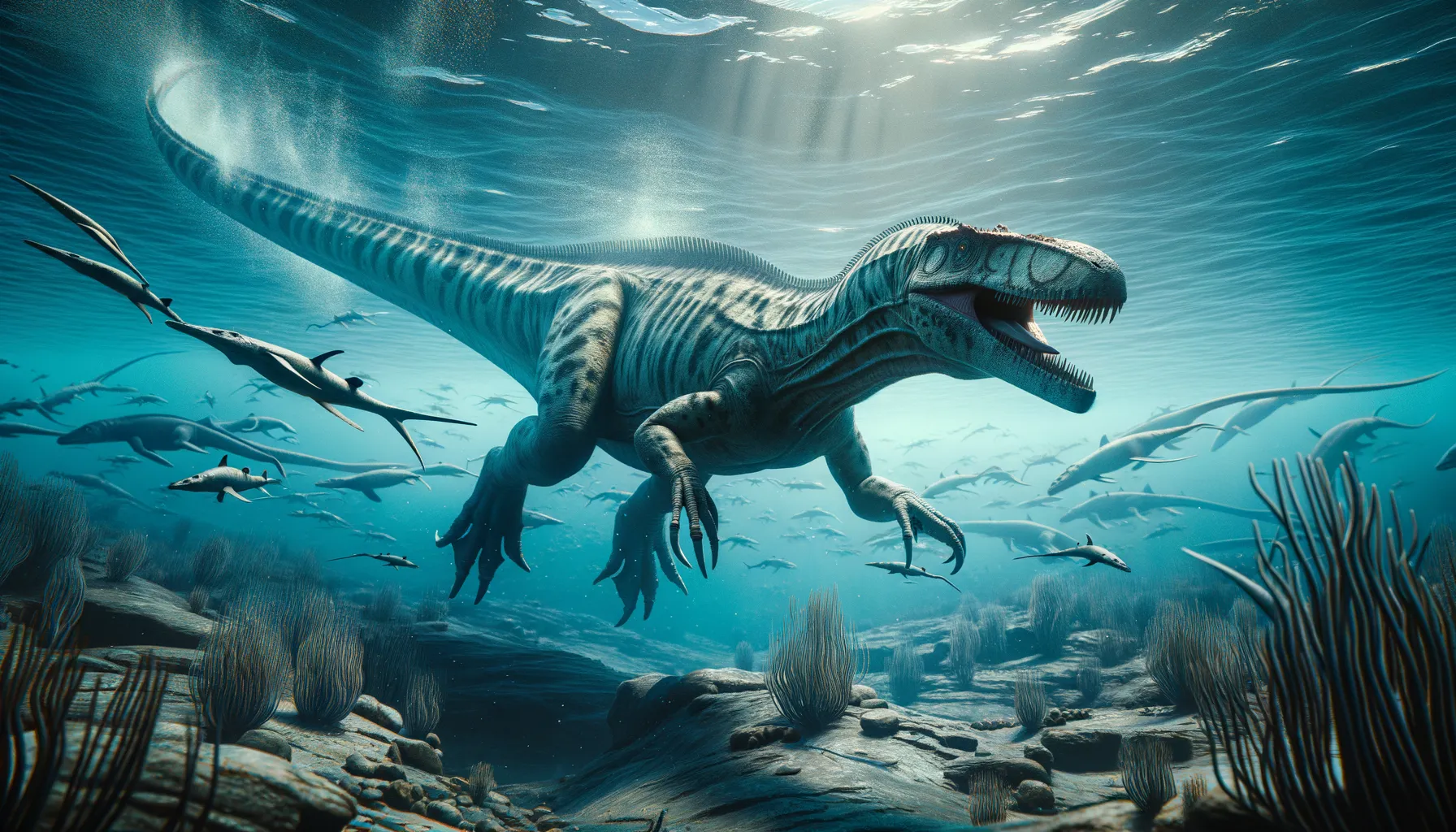
Mosasaurus
Ruler of the ancient oceans.
Period
Cretaceous
Length
Could reach lengths up to 50 feet.
Height
Height around 6 feet at the shoulder.
Weight
Weighed up to 15 tons.
Mosasaurus was a large, ocean-dwelling reptile that lived during the Cretaceous period. It is known for its long, streamlined body, powerful tail, and large jaws filled with sharp teeth. As a top predator of its time, Mosasaurus dominated the seas, hunting a variety of marine life. Its fossils have been pivotal in understanding the diversity and adaptations of prehistoric marine reptiles.
Diet
The Mosasaurus had a carnivorous diet, primarily feeding on fish, squid, and other marine reptiles. Its sharp teeth and strong jaws allowed it to catch and eat large prey.
Hunting
Mosasaurus was an active predator, using its powerful tail for swift propulsion through the water. It ambushed prey with surprise attacks, aided by its excellent sense of movement in the ocean.
Environmental challenges
As sea levels fluctuated during the Cretaceous, Mosasaurus had to adapt to changing habitats. Competition with other apex predators like sharks was also significant. Its survival depended on its ability to find food in varying environmental conditions, especially as ocean temperatures and chemistry altered over time.
Speed
Mosuars were swift swimmers, adapted to ocean life.
Lifespan
Estimated to live around 20 to 30 years.
First discovery
First discovered in the Netherlands in the late 18th century.
Fun Facts
- Mosasaurus was not actually a dinosaur but a large marine reptile that lived during the Late Cretaceous period.
- It had a long, tapered body and could grow up to 56 feet in length, making it one of the largest marine predators of its time.
- This 'lizard of the Meuse River' got its name because its fossils were first discovered near the Meuse River in the Netherlands.
- Mosasaurus had powerful jaws and sharp, conical teeth, ideal for catching and eating fish and other marine animals.
- Instead of being covered in scales, Mosasaurus had smooth skin similar to that of modern whales and dolphins.
- Unlike fish, Mosasaurus used its large, paddled limbs to steer while its long tail provided thrust, much like how marine mammals swim today.
- The movie 'Jurassic World' helped popularize Mosasaurus, depicting it as a giant creature that could leap out of the water to snatch prey.
Growth and Development
Juvenile Mosasaurus grew rapidly, requiring large amounts of food to support development. The growth rate suggests a need to quickly reach a size that could fend off predators. Their development emphasized adaptations for an efficient swimming style and hunting prowess.
Habitat
Mosasaurus thrived in warm, shallow seas and along continental shelves. These environments provided ample food sources and opportunities for ambush. They navigated diverse marine settings, from open oceans to coastal regions, exploiting various marine ecosystems.
Interaction with other species
Mosasaurus competed with other marine predators for food resources. It may have preyed on smaller marine reptiles while avoiding conflicts with similarly large predatory species. Interactions also included scavenging on carcasses, illustrating its opportunistic feeding habits.
Natural lifespan
In the wild, Mosasaurus had a lifespan of several decades.
Reproduction
Mosasaurus is believed to give live birth, as indicated by the discovery of embryos in fossil remains. This adaptation allowed them to reproduce in their aquatic home without needing to return to land. Parental care after birth, if any, remains speculative due to limited evidence.
Social behaviour
It is speculated that Mosasaurus might have been solitary or formed loose groups. Hunting likely involved solitary tactics, given the scarcity of prey-sharing evidence. However, occasional gatherings could have occurred during breeding or feeding in resource-rich areas.
Fossil locations
Notable Mosasaurus fossils have been found in Europe, North America, and Africa. These discoveries have provided vital insights into its distribution and adaptations. The fossils are often discovered in sedimentary rock formations that were once ancient seafloors.
